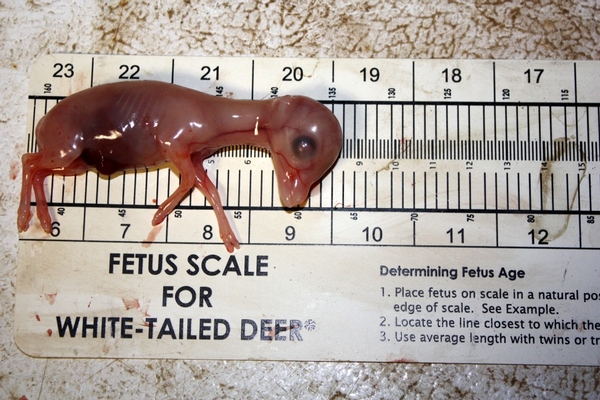
How to Determine the Rut Peak on Your Ranch

Have you ever wondered exactly when the peak of the breeding season occurs on your very own hunting grounds? Are the hunting magazine articles too general and not specific enough for you? Have you read the TPWD brochure showing the eco-region peak breeding dates? All of these offer great information but some folks desire much more specifics for their own ranches. Continue reading for more information and details to help you determine the peak of the breeding season on your very own ranch.
Back in the late 1970’s and early 80’s, deer researchers began developing a method to understand the exact dates of breeding activity. This technique involves aging a fetus based on its size and then backdating to determine conception dates. The technique has proven extremely accurate and valuable to land managers and hunters in order to better understand their specific herd dynamics and when to make specific management decisions.
The method involves removing the fetus from a harvested doe carcass and using a fetus scale specifically created for such tasks. The scale not only measures the length of the fetus, but also uses the Julian calendar to backdate in order to determine the specific conception date. It also provides the ability to foredate to estimate the date it would have been born. This information is important for managers to detect changes in breeding dates with respect to adult sex ratio and herd management programs.
For this exercise, let’s say the doe was harvested on December 28. The fetus in this photo is 64 days old. The Julian date for December 28 is 362. This number minus the fetal age in days (64) is 298. The Julian date of 298 occurs on October 25 and this is the date of conception.
The number of days to parturition (birth) was 134, see scale. This number, added to the Julian date of the harvest (362) is 496. The Julian date of 496 occurs on May 11 and that is the projected date of birth. So the doe was bred on October 25 and would have fawned on May 11, great information you would have never known without this exercise.
I harvested this northern San Saba County doe two years ago on December 28 so this tells me that the rut was on the last week of October and that the first wave of newborn fawns hit the ground on or about May 11 that year. This information is valuable and helps me to decide if I want to have cattle in that particular pasture at that time, decide when to harvest a crop or perhaps use heavy equipment in my pastures at that time. Perhaps I will defer grazing in that pasture for a few extra weeks to allow maximum fawning cover to remain or maybe I can use the local trappers or helicopter to help me lower the predator population in the weeks leading up to the peak birthing dates. This information also tells me I need to be enrolled in the MLDP program so that I can harvest bucks with undesirable antler traits before they breed instead of waiting on traditional November rifle dates to remove those bucks. This data also tells me approximately when the secondary rut will be (28 days after the primary rut) so that I may expect more mature buck activity.
So you can see how useful and practical this information can be. Some folks cringe at the facts and others like to claim never to shoot does late in the season because they may be pregnant. This technique and exercise proves that if you shoot a doe in San Saba County in the month of November, you are indeed harvesting pregnant does.
Take this information to your hunting camp and see what you learn. I suspect you can win a few bets and impress your buddies around the campfire with it.
Posted in: Deer Management
